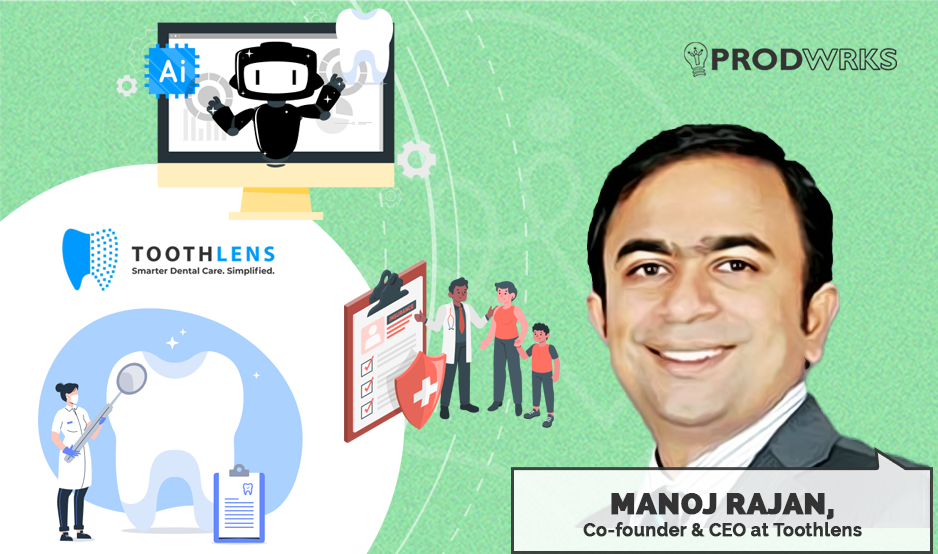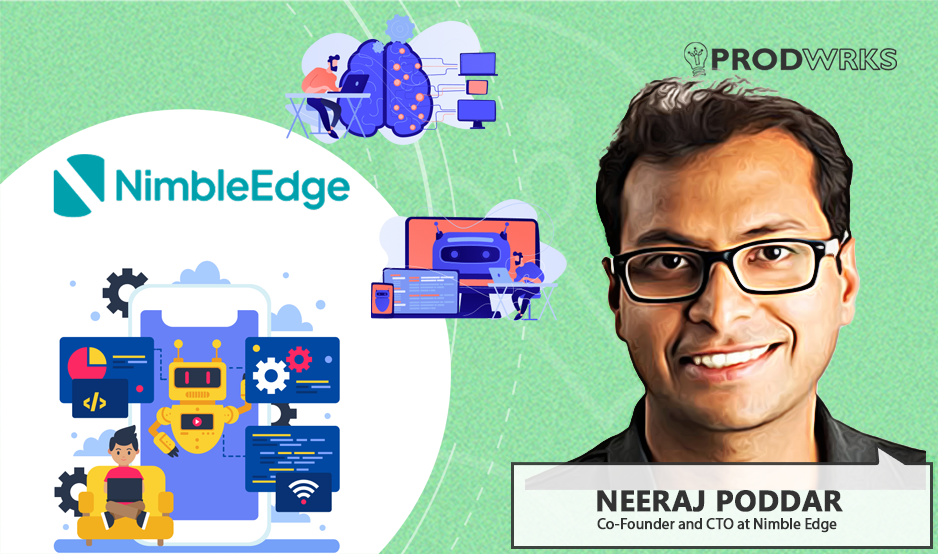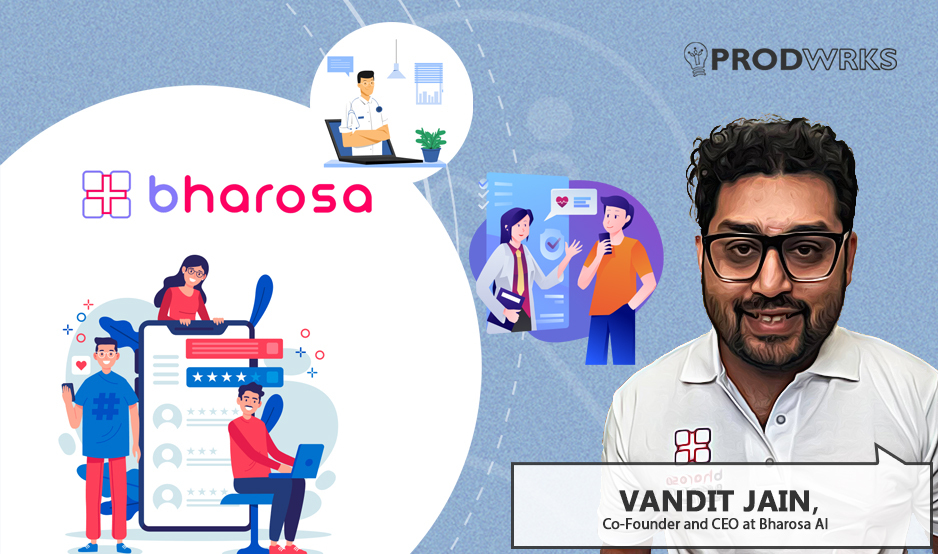
In India, dental care often falls through the cracks of the healthcare system. It’s expensive, rarely covered by insurance, and largely overlooked by both policyholders and providers. This gap was hard to ignore for Dr. Manoj Rajan, CEO and Co-founder of Toothlens, who had spent years as a dental practitioner hearing the same complaint from patients: “Why doesn’t my insurance cover this?”
To tackle the issue, Manoj teamed up with his co-founders to build Toothlens, a health tech company specializing in AI-driven dental care solutions that operates globally, with offices in Chennai (India), Delaware (USA), and Germany. The company focuses on addressing the gaps in dental insurance infrastructure in India. But their journey didn’t begin at home. It started 13,000 kilometers away, in the United States.
Toothlens first launched in the American market, where dental insurance systems were mature and the need for better tech infrastructure was immediate. After a year of building and iterating with U.S. insurers, the team brought the product back to India, now a proven, plug-and-play platform ready for local adoption.
Today, Toothlens powers the backend of India’s emerging dental insurance landscape. Its AI-driven stack includes a phone-based mouth scan for users, real-time claims processing for clinics, and a data-rich underwriting engine for insurers. The company partners with giants like Star Health and Plum and has managed to touch the lives of over 500,000 customers through its clientele.
Building The Dental Insurance Infrastructure for India
Manoj explains, “This is the biggest opportunity I've seen in India, and being a dental practitioner myself, the lack of insurance that was inclusive of dental procedures was a problem I heard very often. So my co-founders got together and decided to solve for it.”
Manoj explains, “Unlike most others who build and test in India before taking it to the US, we took a different path. We didn’t have customers in India to trial with, so we went straight to where dental insurance customers already existed, the US. Once we had perfected the product there and saw it working well, we brought that proven solution back to India.”
“In India, launching a dental insurance plan typically takes years. Insurers need to onboard clinics, set up rate contracts, build software, and maintain it all. With Toothlens, they get instant access to this entire setup through a simple plug-in. What used to take years now takes just a few months, and we have thousands of clinics in India that we have empanelled from the dental network.”
A Full-Stack Platform for India’s Dental Insurance Market
Toothlens is building the rails for dental insurance in India by creating the tech infrastructure insurers need to underwrite, onboard, and process claims for dental products delivered through a cloud-based platform.
Their product stack has three core components:
- AI-powered onboarding and mouth scan: For the users of its clients, Toothlens offers a simple phone-based dental scan. Using AI, the app captures images of the user’s mouth to assess dental health, which helps insurance companies with underwriting and the quick identification of dental issues.
- Claims software for clinics: On the provider side, Toothlens gives clinics a lightweight,
AI-enabled claims app to process insurance claims in real time. - Underwriting engine for insurers: Toothlens also provides an underwriting engine that uses the scan data and historical trends to help insurers design and price their dental policies better.
“You can call it dental insurance in a box,” says Manoj. “We mainly partner with insurance and healthtech companies to enable dental insurance. We do not sell insurance directly. We are a tech company. Insurance companies use our technology and product solutions to add dental insurance to their portfolio.”
Cracking the Enterprise Code
“They had health insurance products, but not dental,” Manoj explains. “Our strategy was to show them that by partnering with us, they could easily launch dental insurance products, something we knew there was demand for. Once we secured our first customer, the rest followed quickly,” he adds. “Almost all of them needed this product.”
Adapting to the Indian Markets
Manoj explains, “In India, most companies aren't ready to experiment, and that’s where startups can get stuck. If no one is willing to collaborate and also pay you while you’re building, it becomes very hard to move forward.”
Toothlens had to make a series of adjustments before bringing the product to India. Although the core functionality of the product remained the same, adaptation had to be made in terms of how the product communicated to the indian markets. The grammar, style of writing, and copy needed to reflect Indian usage, which was very different from the US.
Manoj explains, “The main changes came from the consumer side. For example, in India, we say ‘take a mouth selfie’ because people understand the word selfie. In the US, they say ‘take a mouth scan.’ But in India, when you say scan, people think of going to a diagnostic center. A photo taken on your phone is not considered a scan here, but in the US, it is.”
Manoj explains, “In India, if you put an arrow on the screen, people know they have to tap it to go to the next step. In the US, you have to put the arrow and also write the word ‘Next’ beside it. They will not assume anything. It’s the same with a help button. In India, just the icon is enough. There, unless you add the word ‘Help,’ they may not recognize it. Mobile phone usage is much stronger here, and people are more comfortable with icons and gestures. In the US, users prefer everything to be very clear and spelled out.”
In the US, the company built a comprehensive appointment booking system within the app. In contrast, the Indian market relies heavily on phone calls for scheduling, making such a feature unnecessary. Toothlens also had to adjust its onboarding to be mobile-friendly for the Indian market, allowing clinics to operate easily on both mobile phones and laptops.
For the Indian market, Toothlens focused on simplifying the product by removing features that were unnecessary rather than adding new ones. Many elements common in other markets did not apply in India, so the team adapted the product to better fit local needs.
Overall, Manoj sums up the difference in regulatory and technological infrastructure: “In the US, insurance systems have been in place for 40 to 50 years, so you can plug into existing systems. In India, you focus on what is necessary.”
Measuring Impact and Rethinking Processes with AI
Toothlens measures its success primarily through utilization metrics tied to insurance policies. The number of active policyholders is a key indicator, along with how frequently those policies are used. Profitability also plays a crucial role and is tracked through the loss ratio of the product. Customer satisfaction completes their core metrics and is measured through tools like NPS and CSAT scores.
Looking ahead, Toothlens sees artificial intelligence as a major game changer for startups at their stage. AI enables smaller teams to move faster while maintaining high quality. The company is actively rethinking every part of its process from development to quality assurance through the lens of AI-driven automation.
“We are reimagining every step and thinking about how we can improve that using AI, or build using AI, or automate using AI. That is our objective,” Manoj says. He adds, “Startups need to quickly focus on what they can do better with AI, not just for clients but internally in their build and QA processes.”



